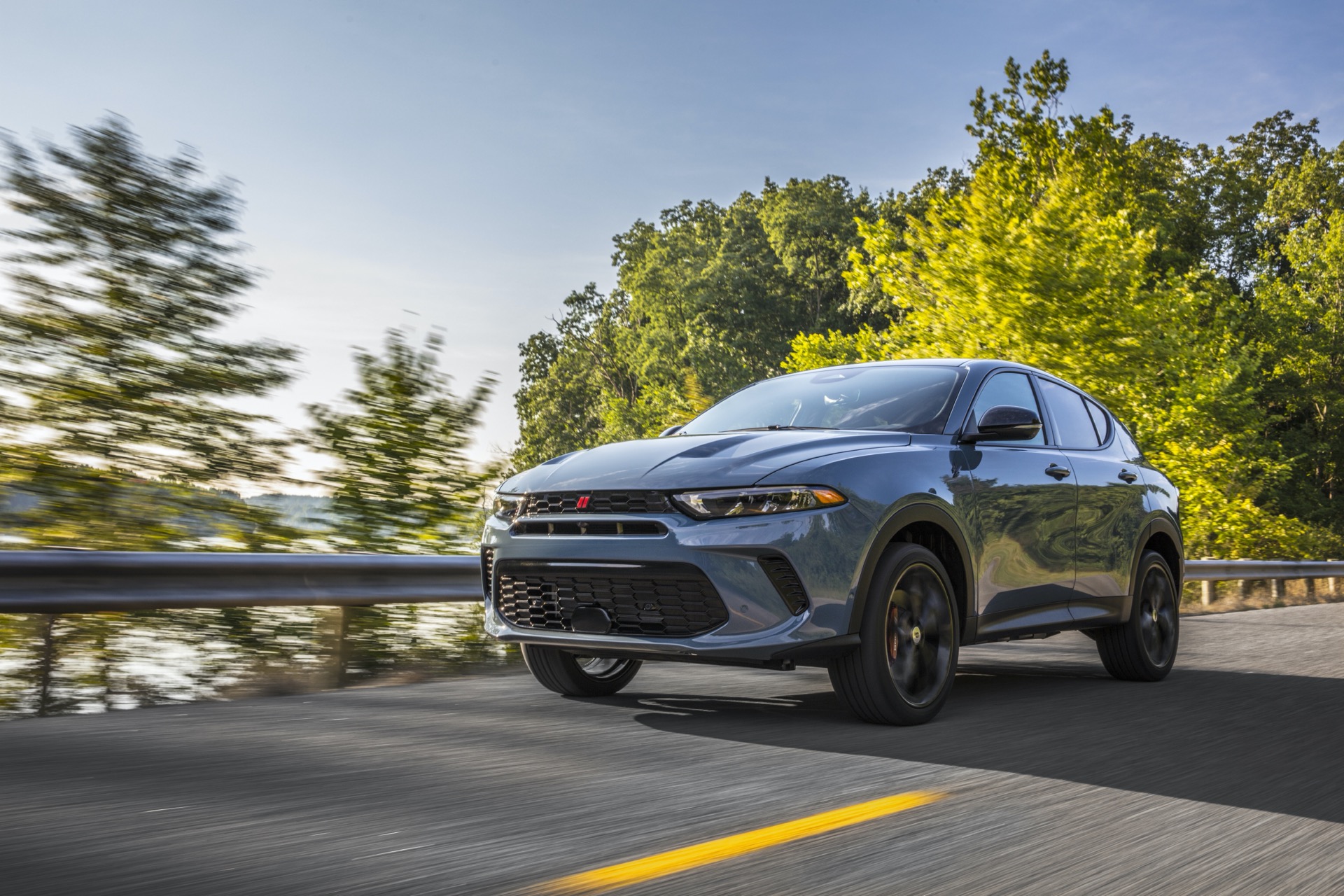What kind of car is the 2023 Dodge Hornet? What does it compare to?
The Dodge Hornet resurrects an old model name and applies to the most popular modern vehicle segment in the small crossover SUV. Sharing a platform with the Alfa Romeo Tonale, the Dodge Hornet competes with a range of five-seat crossovers, from the Chevrolet Trailblazer to the Hyundai Kona.
Is the 2023 Dodge Hornet a good car?
Review continues below
We won’t know until we drive it later this year, but the new model represents a transition for Dodge from its vaunted V-8 muscle car history to a less certain electrified future, capitalizing on the current trend of crossover SUVs. Its performance promise stands out from other entry-level crossovers, but it remains to be seen how it will stand out from the Tonale’s shadow. (Read more about how we rate cars.)
What’s new for the 2023 Dodge Hornet?
Everything. Though it shares the same body design, powertrain options, chassis and mechanicals with the 2023 Alfa Romeo Tonale, Dodge positions the Hornet as a performance-oriented alternative.
The smallest Dodge adopts the brand’s swollen muscle car cues with hood vents and a wide, low rectangular grille with a prominent brow housing LED headlights and running lights. The body follows the strong, resolute slabs of other Dodge vehicles, leaving design flourishes to wheel choices. In the back, a red full-length light square captures the Dodge DNA, which works out well because the Dodge brand name cannot be found on the exterior of the Hornet. A Blacktop package adds gloss black elements to the usual places, including 18-inch black alloy wheels. A Track Pack upgrades them to 20-inchers flashing red Brembo front brake calipers.
While the exterior can look like the Tonale, the interior is all Dodge, with a traditional dash gauge cluster design going digital but stretching horizontally even as it tips toward the driver. Cloth and synthetic leather bucket seats stitched with red accents uphold the Dodge vibe.
The Hornet channels the Hudson Hornet from the middle of last century as well as a concept teased this century before being derailed. It comes in two performance grades, a GT model with a 2.0-liter turbo-4 making 265 hp and 295 lb-ft of torque, or an R/T plug-in hybrid model with more performance potential.
Both models come standard with all-wheel drive, and the GT pairs with a 9-speed automatic transmission. A steering wheel button activates Sport Mode that tweaks throttle response and delays shifts while tightening the electronic power steering. Available two-stage shocks stiffen the suspension to offset some of its 3,715-lb curb weight in turns. On straights, Dodge says it goes 0-60 mph in 6.5 seconds.
The R/T plug-in hybrid pairs a 1.3-liter turbo-4 with a 90-kw motor powering the rear axle, while a 6-speed automatic shuttles engine torque to the front axle. Combined it makes 285 hp and 383 lb-ft, and with a “PowerShot” Sport mode that provides 25 extra horsepower in bursts of 15 seconds, it can go from 0-60 mph in 6.1 seconds. Dodge says that PowerShot shaves one second off its 60 mph time, so without that function the R/T is slower than the GT.
Expect the R/T to be quicker off the line and more efficient across the board. The 15.5-kwh lithium ion battery pack feeds the motor and a starter generator to enable at least 30 miles of electric range, Dodge estimates. A 7.4-kw onboard charger enables 240-volt charging in about 2.5 hours. It has regenerative braking but does not have a one-pedal drive feature.
Dodge claims several best-in-class performance features, but we can’t corroborate that until we drive it. The fully independent suspension uses MacPherson struts up front and a three-link rear suspension. Available dual-stage shocks can stiffen the suspension on either model. Dodge says more body stiffness and a 52/48 weight distribution promises more spirited handling than the competition.
For everyday driving, Dodge equips the 2023 Hornet with standard driver-assist technology meant to mitigate or avoid crashes, including standard automatic emergency braking with pedestrian and cyclist detection, active lane control, blind-spot monitors, and rear parking sensors. An available Tech Pack adds adaptive cruise control and related highway driving features.
How much does the 2023 Dodge Hornet cost?
With standard AWD, the Hornet GT costs between $29,995 and $34,995. That’s more expensive than the competition’s base models, but the Hornet comes as well-equipped as many premium models in the segment. Standard tech in addition to the driver-assist features include a 12.3-inch digital instrument cluster, 10.3-inch touchscreen operating the brand’s latest infotainment system, wireless Android Auto/Apple CarPlay/Amazon Alexa connectivity, and wireless smartphone charging. It’s one of the better operating systems on the market, and can host two phone profiles simultaneously so one can be used for navigation or calls and the other for multimedia. It rolls on 17-inch alloy wheels.
Options include leather upholstery and 14-speaker Harman Kardon sound on Plus models, a red leather option, a heated steering wheel, heated seats, a hands-free power liftgate, and all the performance parts upgrades available from Dodge’s factory-backed Direct Connection.
The Hornet R/T will cost between $39,995 and $44,995 but should be eligible for some of the $7,500 federal EV tax credit, once the new law passes. In addition to the performance upgrades over the GT, the R/T will have 18-inch alloy wheels, Brembo front brake calipers, and other enhancements.
Where is the 2023 Dodge Hornet made?
In Naples, Italy, alongside the Alfa Romeo Tonale.
